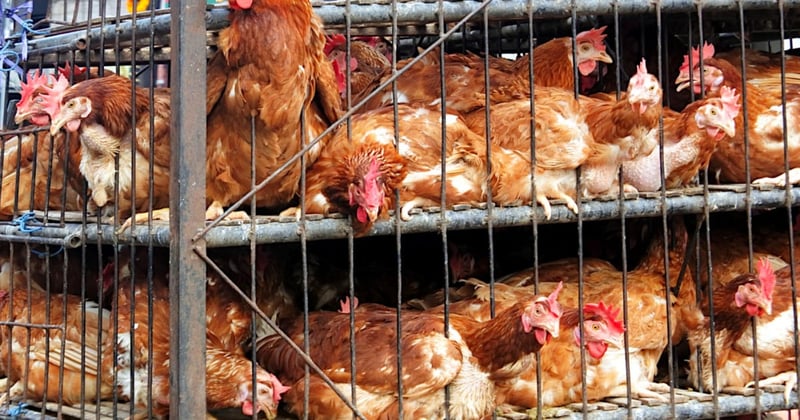
A strain of highly pathogenic avian influenza (HPAI), or bird flu, has been found in at least 26 dairy cow herds in eight US states.
Bird flu has been killing millions of wild birds in recent years, with millions of farmed birds culled in order to try and stop the spread. Despite efforts, the strain keeps spreading around the globe. After a recent outbreak was found in unpasteurized milk from dairy cows in New Mexico, highly pathogenic avian influenza (HPAI) has now spread to 26 herds across eight states just weeks after the nation’s largest egg producer found the virus in chicken flocks.
As of Friday, April 11, 2024, states with dairy herds infected with bird flu include Idaho, Kansas, Michigan, New Mexico, North Carolina, Ohio, Texas, and South Dakota. Type A H5N1 was first reported in dairy cows in March, when New Mexico announced several dairy cows were infected with the virus, and was first reported in domestic ruminants (sheep, cows, goats, and their relatives) in the US when several baby goats in Minnesota succumbed to the virus that same month.
Agriculture officials in 17 states have restricted imports of cows from the eight states and farmers are continuing to test any cows who show symptoms of infection, such as sharply reduced milk supply and lethargy. The animals are then separated from the other animals. Unlike chickens, cows are not culled when they are infected and instead seem to recover within two weeks.
Cal-Maine Foods, the largest egg producer in the US, temporarily halted operations on April 2 after finding bird flu in chicken flocks. The company culled over 1.6 million laying hens and another 337,00 pullets (young hens) since the detection.
At this stage, milk from animals who have tested positive for the virus is being diverted or destroyed and the virus has not mutated—at this time—to make it spread more easily to humans. Currently, people with close or prolonged unprotected exposure to infected animals are at a higher risk of contracting the virus, according to federal agencies.
To date, two people have been infected with bird flu since 2022, including a Texas dairy worker who was in close contact with an infected cow and a prison inmate who caught it while killing infected birds at a Colorado farm while participating in a work program.
Bird flu can be spread through migratory birds and has infected animals around the world, from Antarctica to New York City. A recent study from New York’s Mount Sinai found highly contagious bird flu in some city birds, including geese in the Bronx, Queens, and Brooklyn, a red-tailed hawk in Queens, and a peregrine falcon in the Bronx.
Since 2022, outbreaks of highly pathogenic avian influenza have led to the killing of more than 80 million birds on factory farms in the United States. The spread of H5N1 avian influenza, which has hit Europe and the Americas hard since 2021, has been described as “the largest-ever” continuous outbreak of the disease.
Because bird flu is so infectious, it spreads rapidly throughout bird populations. Chickens, turkeys, and ducks on factory farms are highly susceptible due to the cramped, overcrowded conditions they’re forced to endure.
Transmissible through saliva, mucous, or feces, wild birds can easily be infected if they’re around birds on factory farms who have been exposed to the disease—especially if the wild birds are scavengers who consume the bodies of birds who have died before reaching the slaughterhouse. This leads to migratory birds being infected and then spreading the disease throughout the globe as they travel.
In fact, this highly infectious disease is currently threatening Antarctica’s most unique wildlife populations and has jumped to every continent except Australia. The World Organization for Animal Health (WOAH) noted that approximately 485 bird species and 37 mammal species have been infected with avian influenza since 2021.
Factory farms are breeding grounds for diseases. Many scientists predict they could be ground zero for a future global pandemic.
Now more than ever, we need to rethink the way we interact with all animals.
By shifting to more sustainable and kinder practices, such as reducing or eliminating our consumption and use of animals, we can end the largest source of animal cruelty on the planet: factory farming.
But the animals we share this planet with can’t wait. Take action to ban factory farming right now.